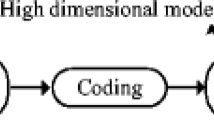Abstract
The image adaptive steganography represented by HUGO (Highly Undetectable steGO) has high anti-detection capabilities. The primary challenge for steganalyzers is how to reliably detect such steganography and extract the embedded message from stego. Although existing steganalysis algorithms based on parameter recognition of STCs (Syndrome-Trellis Codes) can reliably detect adaptive steganography when the embedded message is in plaintext, the steganalysis method is ineffective when the embedded message is in ciphertext. Therefore, a steganalysis algorithm based on partially known plaintext is proposed in this paper. The steganalysis algorithm targets situations wherein in order to facilitate the receiver’s extraction and storage of the embedded message, the file format name and message length may be transported without encryption when HUGO steganography is used to transport the encrypted file. First, the structural characteristics of the parity-check matrix were utilized to simplify the STCs decoding equation. Second, we calculated the submatrix by solving nonhomogeneous linear equations instead of exhausting submatrix, thus, parameter recognition efficiency was significantly improved. Finally, we verified the correctness of the submatrix and extracted the embedded message from stego images. The experimental results show that parameter recognition of STCs can be achieved using an ordinary PC within a short time. Therefore, the embedded message can be extracted when the partly embedded message is known.









Similar content being viewed by others
References
Denemark T, Boroumand M, Fridrich J (2016) Steganalysis features for content-adaptive JPEG steganography. IEEE Trans Inf Forensics Secur 11(8):1736–1746
Filler T, Fridrich J (2011) Design of adaptive steganographic schemes for digital images. Proceedings of SPIE, Electronic Imaging, Media Watermarking, Security, and Forensics XIII, San Francisco, 7880:1–14
Fridrich J, Kodovsky J (2013) Multivariate Gaussian model for designing additive distortion for steganography. Proceedings of IEEE International Conference on Acoustics, Speech and Signal Processing, Vancouver, 32(3):2949–2953
Fridrich J, Kodovsky J (2013) Quantitative steganalysis using rich models. Proceedings of SPIE, Electronic Imaging, Media Watermarking, Security and Forensics XV, San Francisco, 8665:1–11
Fridrich J, Kodovský J, Holub V, Goljan M (2011) Breaking HUGO–the process discovery. Proceedings of International Workshop on Information Hiding, Berlin Heidelberg, 85–101
Gul G, Kurugollu F (2011) A new methodology in steganalysis: Breaking highly undetectable steganography. Proceedings of the 13th International Workshop on Information Hiding, Prague, 6958:71–84
Guo LJ, Ni JQ, Shi YQ (2012) An efficient JPEG steganographic scheme using uniform embedding. Proceedings of the 4th IEEE International Workshop on Information Forensics and Security, Tenerife, 98(5):169–174
Holub V, Fridrich J (2012) Designing steganographic distortion using directional filters. Proceedings of the 4th IEEE International Workshop on Information Forensics and Security, Tenerife, 2(4):234–239
Holub V, Fridrich J (2013) Digital image steganography using universal distortion. Proceedings of the 1st ACM Workshop on Information Hiding and Multimedia Security, Montpellier, 59–68
Holub V, Fridrich J (2013) Random projections of residuals for digital image steganalysis. IEEE Trans Inf Forensics Secur 8(12):1996–2006
Holub V, Fridrich J (2015) Low-complexity features for JPEG steganalysis using undecimated DCT. IEEE Trans Inf Forensics Secur 10(2):219–228
Holub V, Fridrich J (2015) Phase-aware projection model for steganalysis of JPEG images. Proceedings of SPIE, Electronic Imaging, Media Watermarking, Security, and Forensics, San Francisco, 9409:1–11
Kodovsky J, Fridrich J (2012) Rich models for steganalysis of digital images. IEEE Trans Inf Forensics Secur 7(3):868–882
Kodovsky J, Fridrich J (2012) Steganalysis of JPEG images using rich models. Proceedings of SPIE, Electronic Imaging, Media Watermarking, Security, and Forensics XIV, San Francisco, 8303:1–13
Li XL, Li B, Luo XY, Yang B, Zhu R (2013) Steganalysis of a PVD-based content adaptive image steganography. Signal Process 93(9):2529–2538
Luo XY, Song XF, Li XL, Zhang WM, Lu JC, Yang CF, Liu FL (2016) Steganalysis of HUGO steganography based on parameter recognition of syndrome-trellis-codes. Multimedia Tools Appl 75(21):13557–13583
Pevný T, Filler T, Bas P (2010) Using high-dimensional image models to perform highly undetectable steganography. Lect Notes Comput Sci 6387:161–177
Qin C, Zhang XP (2015) Effective reversible data hiding in encrypted image with privacy protection for image content. J Vis Commun Image Represent 31(C):154–164
Shi YQ, Sutthiwan P, Chen LC (2012) Textural features for steganalysis. Proceedings of the 14thInternational Workshop on Information Hiding, Berkeley, 7692:63–77
Song XF, Liu FL, Yang CF, Luo XY, Zhang Y (2015) Steganalysis of adaptive JPEG steganography using 2D Gabor Filters. Proceedings of the 3rd ACM Workshop on Information Hiding and Multimedia Security, Portland, 15–23
Tomas F, Judas J, Fridrich J (2011) Minimizing additive distortion in steganography using syndrome-trellis codes. IEEE Trans Inf Forensics Secur 6(3):920–935
Acknowledgements
This work was supported by the National Natural Science Foundation of China (Grant No. 61379151, 61401512, 61572052, and U1636219), the National Key R&D Program of China (Grant No. 2016YFB0801303 and 2016QY01W0105), and the Key Technologies R&D Program of Henan Province (Grant No.162102210032).
Author information
Authors and Affiliations
Corresponding author
Rights and permissions
About this article
Cite this article
Gan, J., Liu, J., Luo, X. et al. Reliable steganalysis of HUGO steganography based on partially known plaintext. Multimed Tools Appl 77, 18007–18027 (2018). https://doi.org/10.1007/s11042-017-5134-7
Received:
Revised:
Accepted:
Published:
Issue Date:
DOI: https://doi.org/10.1007/s11042-017-5134-7




